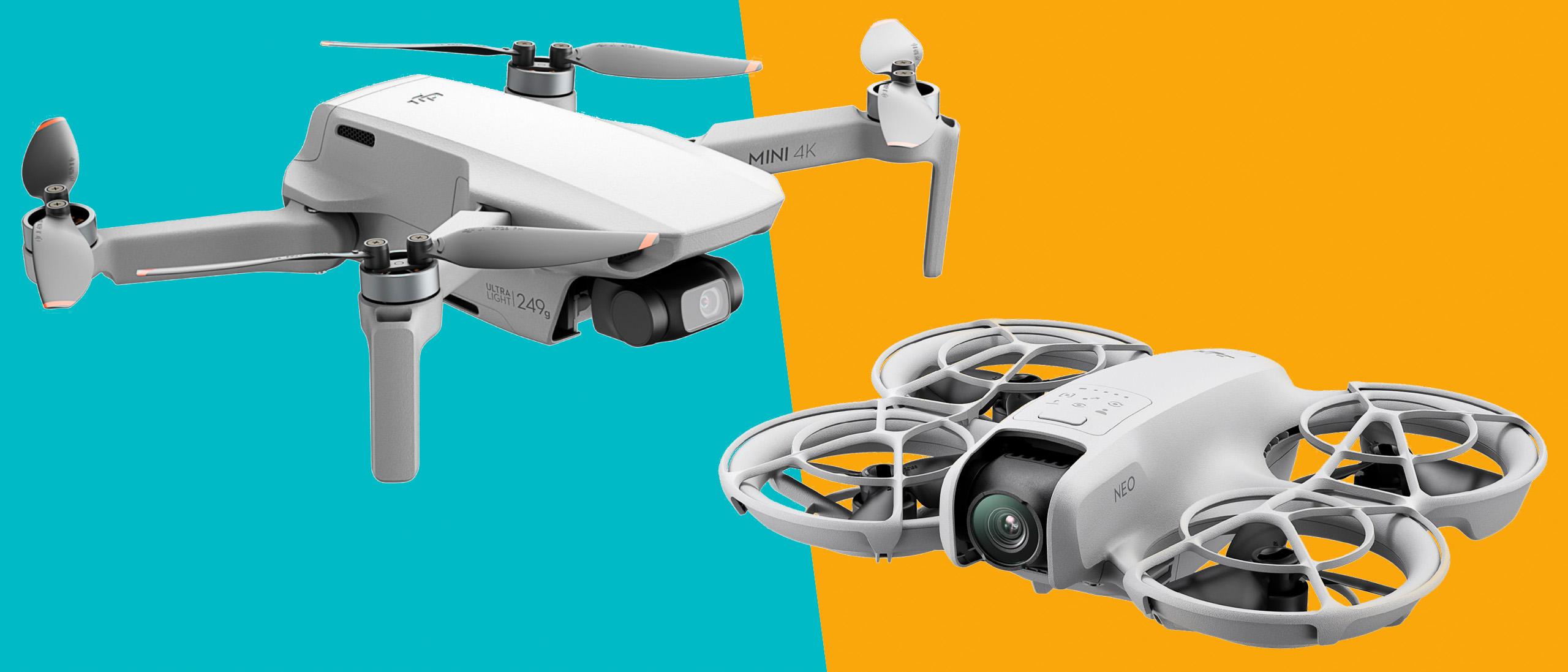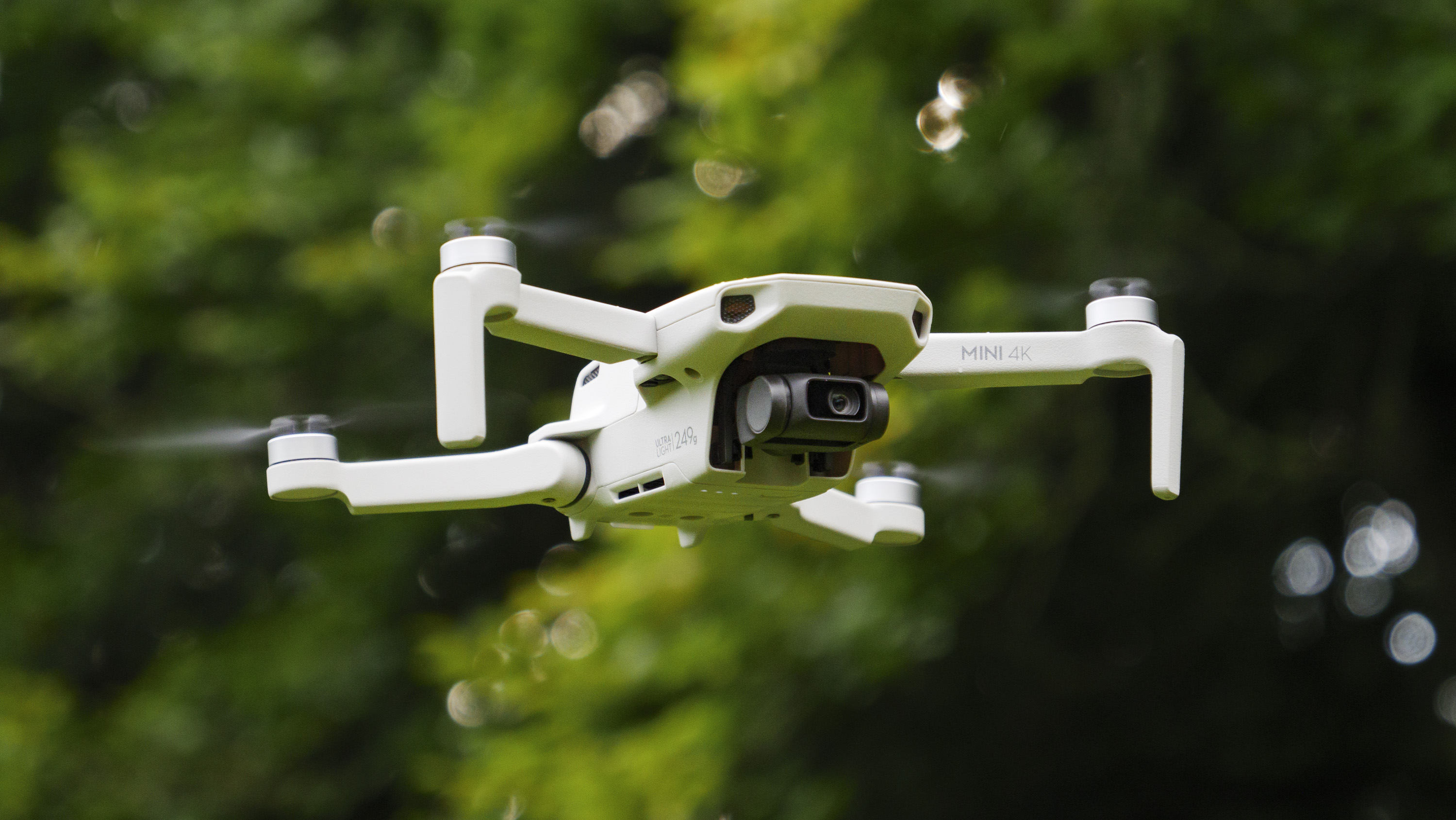I'm a drone expert and trust me, the DJI Mini 4K is a better first drone than the DJI Neo – here are 5 reasons why
The DJI Neo is a barrel of fun, but I'm not convinced it's the best DJI drone for beginners


If you're more interested in flying than taking aerial selfies, the Mini 4K beats the Neo
Pros
- Excellent value
- 4K video quality beats rivals
- Probably your best first drone
Cons
- No object-collision sensors
- Lacks subject tracking found in pricier models like the Mini 4 Pro

Like a mini Avata 2 but with multiple flight capabilities
Pros
- Small and lightweight
- Easy to use
- Multiple flight control options
Cons
- Only shoots photos in JPEG
- 4K video fixed at 30fps
- Expensive to add on goggles and FPV controller
DJI may have sometimes felt like something of a sleeping giant, to a degree, neglecting the absolute beginner end of the drone market. However, this year the launch of the DJI Mini 4K put DJI head-to-head with lower-cost drones already offering 4K video, trumping many of them with significantly better flight and camera performance alongside its superior build quality.
The DJI Neo similarly fills a gap in the DJI stable, but it's also remarkably similar to the HoverAir X1: an autonomous selfie drone that can do things no other drone could do, until the Neo. So, now DJI has produced two of the best beginner drones, first time pilots are presented with a conundrum: do they go for the Neo or the Mini 4K? The headline indicates how I feel about this, but don't just take it at face value, let me explain my rationale…

1. The Mini 4K has superior camera functionality
- Mini 4K: 3-axis mechanical gimbal, RAW photo capture, larger 1/2.3-inch sensor
- Neo: JPEG photos only, 1/2-inch sensor
The main reason we buy drones is to take advantage of what's essentially a flying camera. If the drone's flight performance is fantastic but the camera is poor, the drone as a whole is let down and simply can't be recommended.
I'm not saying that the Neo's camera is poor; it's quite impressive because the 1/2-inch sensor can cover up to 45 degrees of horizontal tilt when capturing stabilized video, and this tilt also covers photos, but at what appears to be reduced tilt angles.
This, however, is much less effective than a 3-axis gimbal which can cover a much greater degree of pitch and tilt of the drone, and is where the Mini 4K has a distinct advantage. Both drones can capture video in standard color profiles up to 4K 30fps and 12MP photos, although the Mini 4K has a 48MP photo mode. What's more, the Mini 4K can capture photos in the RAW DNG format.
With the Neo, to get the most out of the camera you have to buy the Fly More Bundle which includes the DJI RC-N3 Controller. This makes the Neo behave more like a standard camera drone than a selfie drone, with additional camera functionality compared to app-based flight, but only with JPEG photo capture and heavy-handed in-camera processing.

2. The Mini 4K has better overall flight performance
- Mini 4K: More powerful and stable, Level 5 wind resistance, Quickshots flight moves, faster max speed
- Neo: Level 4 wind resistance, autonomous selfie mode, Quickshots flight moves
The Mini 4K offers level 5 wind resistance which is wind speeds of up to 21mph, while the Neo provides up to level 4 wind resistance covering wind speeds up to 18mph.
Sign up for breaking news, reviews, opinion, top tech deals, and more.
This may not sound like much of a difference, it's not, but the design of the Neo with its propeller guards means that is inherently more susceptible to being buffeted by the wind.
The Rocksteady and HorizonBalancing stabilization modes are highly effective, but they can't compensate for wind movement of the drone and this is captured in videos.
The Mini 4K, on the other hand, thanks to the slightly higher wind resistance, more powerful motors and the 3-axis gimbal, produces significantly smoother results. The Neo is also slow with a top speed of just 17.89mph in Sport mode when flying autonomously or using the RC-N3 Controller.
The key feature of the Neo is its autonomous selfie flight patterns, which are fun to begin with but inevitably lose their shine. The Mini 4K doesn't have this capability, but like the Neo it does have Quickshots automated flight patterns.
So, although it can't follow you like the Neo can, you can enjoy capturing professional-looking video footage at the touch of a button alongside better overall flight performance.

3. The Mini 4K is better value for money
- Mini 4K: greater longevity potential
- Neo: less expensive
The Neo wins hands down in terms of price with the base kit coming in at $199 / £169 / AU$299, and the Fly More Bundle with extra batteries and a proper controller costing $289 / £299 / AU$539.
The Mini 4K is slightly more expensive with the base kit priced at $299 / £269 and the Fly More Bundle at $449 / £399. The Mini 4K isn’t available from the DJI Store or Amazon in Australia.
So, here we find ourselves at a contradictory juncture. I'm insinuating that the Mini 4K is better value than the Neo, but the Neo is less expensive – so how does that work?
When I look at the value of drones, I don’t simply consider their initial cost. Instead, I look at cost, features, performance and longevity; how much use can you realistically get from a drone and for how long will it fulfil your requirements?
For me, the Neo is a bit gimmicky and what it does well becomes boring fairly quickly. Then, in terms of a camera drone, what you're left with is a drone that simply cannot perform as well as the Mini 4K.
I bet that many drone beginners who opt for the Neo will quickly outgrow it and feel the upgrade itch much sooner than if they bought the Mini 4K. Great for DJI, but not great for your wallet.

4. The Mini 4K has longer flight times
- Mini 4K: Up to 31 minutes
- Neo: Up to 18 minutes
Being primarily a selfie drone that's small and lightweight, the Neo's batteries are small and have an advertised flight time of up to 18 minutes. Advertised flight times never translate to real-world use.
The Mini 4K has an advertised flight time of up to 31 minutes, which is much lower in reality but is still higher than the Neo's maximum.
You're probably shouting at your screen as you read. "It doesn’t matter, the Neo has plenty of flight time per battery." And it does when used as a selfie drone for short bursts of automated flight.
But there's only so much subject tracking you'll have an appetite for with the Neo. And once you switch to using it as a camera drone, battery life becomes much more important.
Whether you're a beginner or a more experienced pilot, flight times are important for camera drones because they typically spend a lot of time hovering when taking photos.
For video capture, you may need to perform a flight maneuver several times before you get it just right. Both of these eat up the battery, so even if you have the Fly More Bundle with three batteries, batteries can still be used up quickly.

5. The Neo isn’t main drone material
- Mini 4K: a better experience for pilots
- Neo: Selfies soon become tiresome
This one is a little out there, but hear me out. Despite the Neo being marketed as a beginner's selfie drone with multiple flight capabilities, it's still not the best all-rounder by a long shot.
I've flown and reviewed nearly all DJI drones and for me, the Neo is a bit of fun on the side when you already own something like a DJI Mini 3, a DJI Mini 4 Pro, a DJI Avata 2, DJI Mavic 3 Pro or, of course, a DJI Mini 4K.
This is because the Neo is designed mainly as a selfie drone with additional flight/control capabilities. But as a camera drone, it's inferior to the Mini 4K and as an FPV drone, it's inferior to the Avata 2.
This, alongside the previous points, is why it's more of an inexpensive bit of fun alongside your main drone. Plus, if you don’t opt for the Neo Fly More Bundle, manual control of the Neo via the DJI Fly app is limited, it's slightly frustrating and flight distance is limited to just 50m.

A few reasons why I'd choose the DJI Neo instead
- Incredibly easy to use
- Multiple control options
This may seem like a Neo-bashing exercise, but it isn't and I do have a great deal of respect for what DJI has achieved with the drone. One aspect of the drone that makes it attractive as a camera drone is the propeller guards. These make the Neo incredibly safe to fly close to people and objects, although great care still has to be taken in these situations.
When flying the Neo with the RC-N3 Controller like a camera drone, the propeller guards mean you can fly through tighter gaps without fear of damaging the propellers. Sure, you can still crash, but it does provide more confidence when it comes to capturing dynamic video footage that you probably wouldn’t want to risk with a standard camera drone like the Mini 4K.
I also love the fact that the Neo is incredibly easy to use, which is fantastic for beginners. Plus, it can be flown in multiple ways including with the DJI Fly app, app free using just the drone, with the RC-N3 Controller and even flown as an FPV drone using DJI FPV accessories. Although these are expensive to buy individually.
This number of control options has never been seen before and it's an interesting approach because the Neo is, to some degree, three drones in one. It's a jack of all trades master of none, but it possibly marks a new and interesting direction for where drone design and versatility could be headed.

You might also like

James Abbott is a professional photographer and freelance photography journalist. He contributes articles about photography, cameras and drones to a wide range of magazines and websites where he applies a wealth of experience to testing the latest photographic tech. James is also the author of ‘The Digital Darkroom: The Definitive Guide to Photo Editing’.